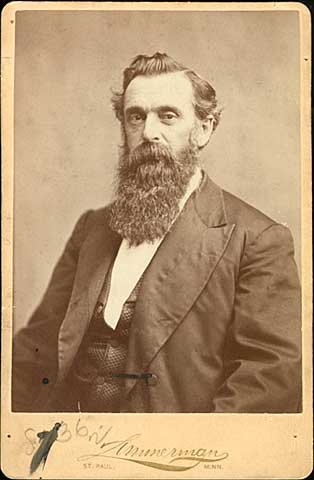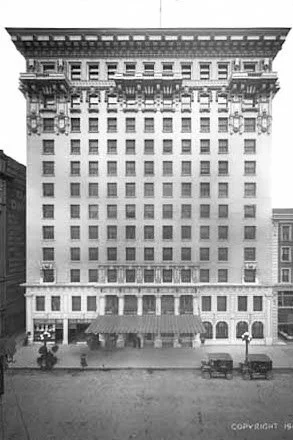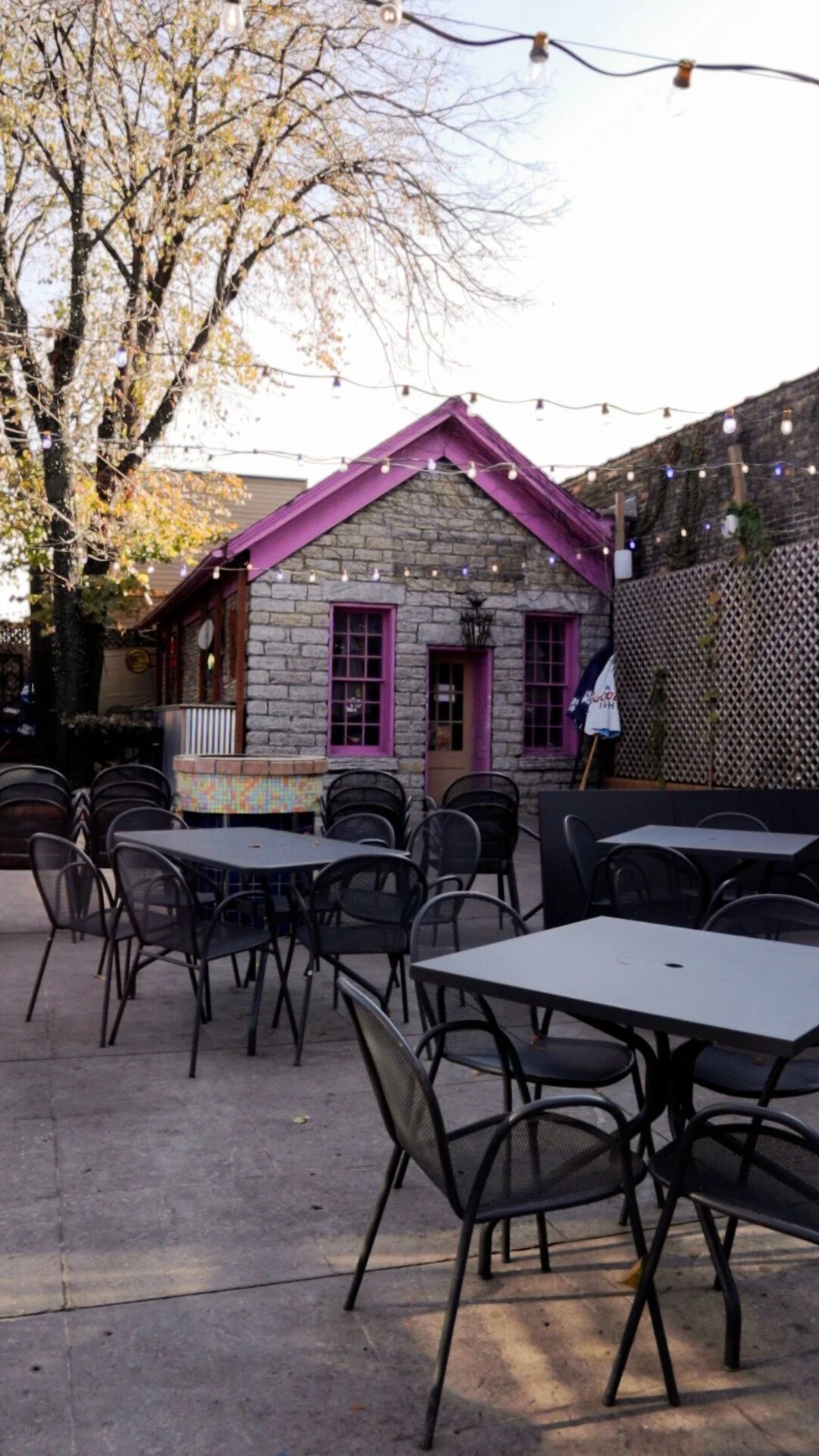The Justus Ramsey House
UPDATE: This post was published on October 27th, 2022. For the history of the Justus Ramsey house, continue reading. For an update on the status of the house after a meeting of the St. Paul Historic Preservation Commission on December 5, 2022, please read the post linked HERE.
I guess I assumed the Justus Ramsey house would always be there. When I first Googled “Oldest House in St. Paul”, I was surprised to learn it wasn’t one of the mansions on Summit Avenue or a house on Dayton’s Bluff. Instead, the Justus Ramsey house - which is considered the oldest because it is still in its original location, there are a lot of competitors for the title - sits in a commercial area, surrounded by bars and restaurants on West Seventh. The “little stone house” has been part of a lot of restaurants through the years, most recently Burger Moe’s. In fact, I had been to the restaurant a couple of times (once when it was El Patio and again when it became Burger Moe’s) and they were using the stone house as a wait station for the outdoor service. Who would have thought?
You would be completely justified if you also said, “I had NO idea!” There is absolutely no exterior sign to designate what the house even is, let alone its historical status - but for the owner not to know? Well, that’s another story.
In June 2022, the owner of Burger Moe’s (Moe Sharif) filed the paperwork to demolish the Justus Ramsey House claiming that it is too damaged to repair. The paperwork with the city automatically triggered a review by the St. Paul Heritage Preservation Commission and that is when a lot of questions began.
Alexander Ramsey came to the Minnesota Territory in 1849. The newly appointed Territorial Governor brought his brother, Justus Ramsey, with him. Justus would also serve in the Territorial government serving three terms in the State House of Representatives. Justus was also interested in real estate and he saw a booming market in the new frontier of the Minnesota Territory. He built the little stone house on West Seventh, surrounded by other small and mid-size houses, as a rental for newcomers who needed temporary housing.
The house continued to be a rental for decades, briefly became the kitchen for a neighboring boarding house, a pioneer clothing store, then became an Antique store in the 1930s. In the 1970s, a plan to widen West Seventh posed a threat to a lot of historic structures. The threat sparked a movement to save the little stone house and it was added to the list of National Registered Historic Places in 1975. With that designation came a protected status. The owner would have to get approval from the city before making any changes to the building and would be required maintain the building. It also means that the owner is eligible for a wide variety of local, state, and federal grants, loans, or tax credits to help fund the necessary work.
Fast forward to today. Moe Sharif, who bought the restaurant in 2010, decades after it became a historic landmark, is saying that the structure is too damaged to repair and wants it demolished. Neighbors and owners of other historic buildings are wondering how that happened. If he knew it was a historic landmark and he knew he was required to do upkeep, how did it get so bad?
Demolition by Neglect
Some are suspicious that Moe is attempting to perform “demolition by neglect”. That’s what it is called when an owner knows they need to do the maintenance, doesn’t want to (for financial or other reasons), so they let the property get worse and worse until the city has no other choice than to grant the demolition. This would free Moe of the burden of keeping up the little stone house and, as he is reported as saying, “add 4 more tables to his patio”.
If Moe was receiving grant money or tax credits from any of the programs set up to support owners of historic buildings, but he failed to do the actual upkeep, he could be facing serious penalties. The information on that is hard to find in this specific case, but lets look at the other things the Historic Preservation Commission will need to consider. Should they step in to save the Justus Ramsey Stone House?
Is it historic enough?
Even though it is named after him, Justus Ramsey never lived in the house. In fact, Justus only owned the little stone house for a few years. It’s not clear exactly what year it was built, but he lost it in 1859 during the financial fallout from the stock market Panic of 1857. Is the Ramsey family connection historic enough to save it?
Robert A. Smith
One of the people who did live in the house was Robert A. Smith. Smith came to Minnesota to serve as the secretary for his brother-in-law and the next Territorial Governor after Ramsey, Willis A. Gorman. Smith continued to serve the city and state in a variety of roles for a total of 48 years. Territorial Librarian, Ramsey County Treasurer, St. Paul City Council, State House Representative, and State Senator - sometimes multiple positions at the same time. He also served 8 terms as the Mayor of St. Paul, making him the longest serving mayor to date. Smith Avenue and the Smith Avenue Bridge are named in his honor. But he only lived in the Justus Ramsey house for a short time when he first arrived. Does that connection make it historic enough to save it?
Or what about the Munger Brothers? Russell and Roger Munger lived in the house briefly when the first arrived in Minnesota, too. Roger Munger moved on to Duluth where he became a major dealer in the grain business at the port there. He also became one of the state’s first millionaires. Russell opened a music store in St. Paul and was the bandleader of some of the first bands in Minnesota, including the Great Western Band.
Some say that Russell commissioned the composer Daniel D. Emmett to write an early version of “Dixie” and to have his black-face troupe perform it at his store. During the American Civil War, the song became the de facto national anthem of the Confederacy and cemented the term “Dixie” as describing the pro-slavery south. The tune was also adopted by Union soldiers, creating their own lyrics.
Again, none of this happened while either of the Munger Brothers lived in the Justus Ramsey house. Is the connection historic enough to save it?
1900 Census
Following the “Dixie” story, it’s kind of ironic to learn what happened next in the history of the little stone house. Beginning in the late 1890s, it was home to a string of Black families coming to Minnesota from the South. They were the start of the Black community that formed around West Seventh and Seven Corners and thrived. Many of the families worked for the wealthy families on Summit Hill. One family was George and Maria Perkins who were former slaves from South Carolina and Kentucky. As noted by local historian Jim Sazevich, “It’s remarkable that this little building could house both the most popular mayor in the city’s history and, a few years later, freed slaves that show up almost nowhere else in written history.”
Does that make it historic enough to save? And what about the architectural aspects of its historic value?
The Justus Ramsey house was built at a time in Minnesota history when it was a “use what you’ve got” era of architecture. Using ashlar and Platteville limestone quarried from the nearby hills, the house was built using some aspects of Greek Revival architecture that was popular at the time. The front of the house was symmetrical with the door in the center and a window on either side. The flush lintels above and sashes below the door and windows are very decorative and the stone used on the front is “dressed” or smooth, while the stone used on the sides and back are rough or “slag”. It may not be super interesting on a design level at first glance, but it is the only remaining example of a small stone house of this style compared to the many examples of stone mansions that still exist.
Unfortunately, a lot of the building has been changed over the years. The roof, chimney, hot pink paint, and beer signs are not original. Additional windows were added at some point and the eave on the side of the house was chopped off, giving it a bit of an asymmetrical appearance. All of the interior woodwork, floors and walls, was removed long ago. According to a report released by an outside inspection team in mid-October there are holes in the roof and the north wall and chimney have collapsed. Still, they believe the damage can be repaired. Is it worth it?
Finally, what will it mean to historic preservation if the house is allowed to be demolished? Will it encourage other owners of historically designated structures to skirt the red tape involved in owning old properties that require expensive upkeep and repairs?
In the meantime, the St. Paul city council is arranging for emergency funding to stabilize the building and possibly help with the restorations. However, even if the Historic Preservation Commission does decide to save the building, Sharif can still appeal to the city council to override their decision.
There is also a petition on Change.org, to stop the demolition and raise money for the cause.
What do YOU think? Let me know in the comments if you do or don’t think the Justus Ramsey stone house should be saved. How do we balance historic value with economic value? How do we square the wants of the community with the rights of the owners?
















